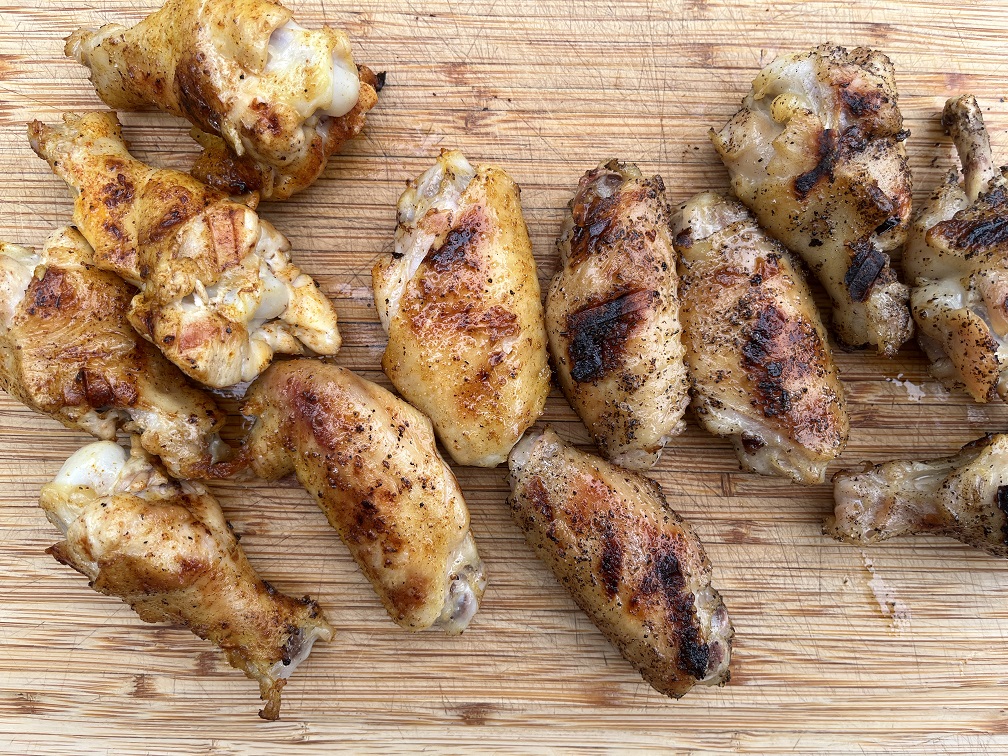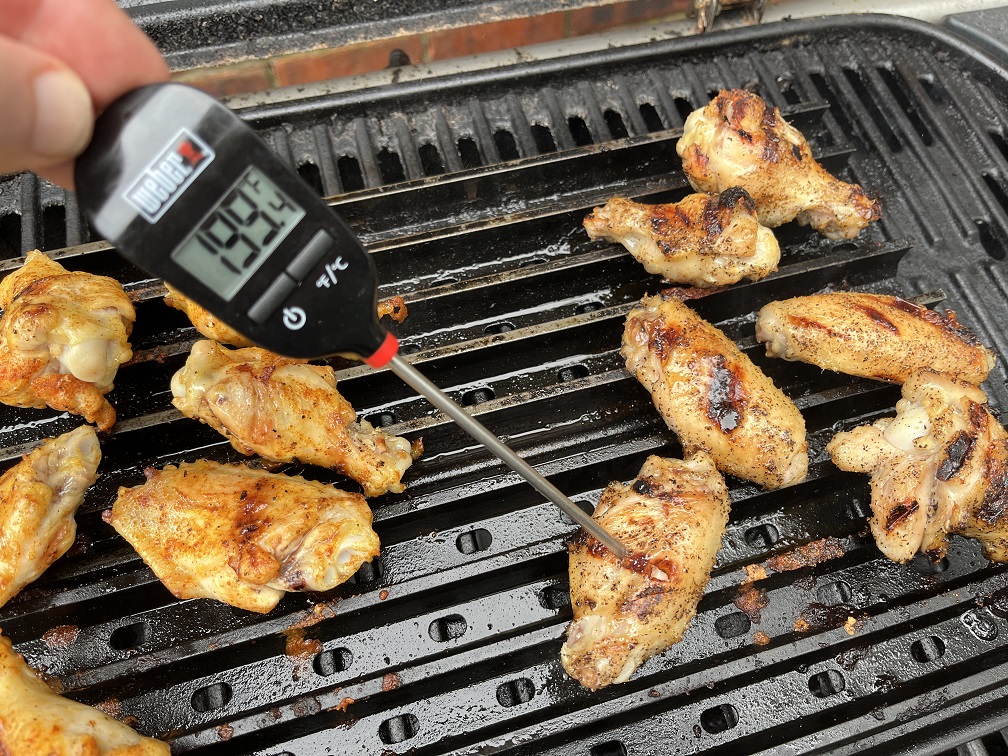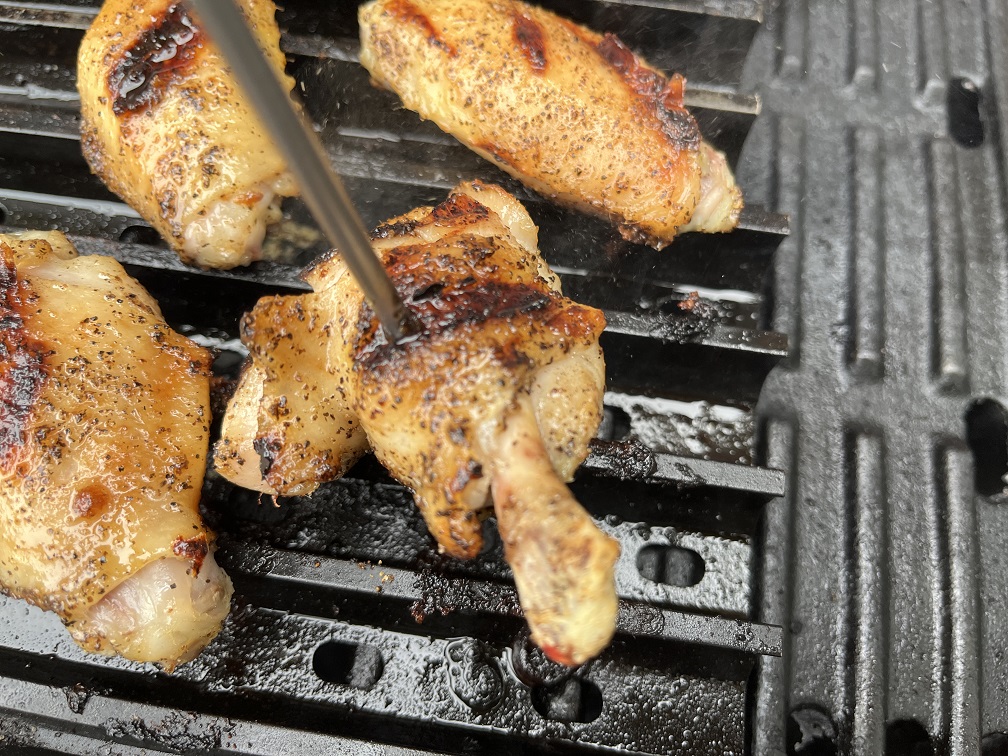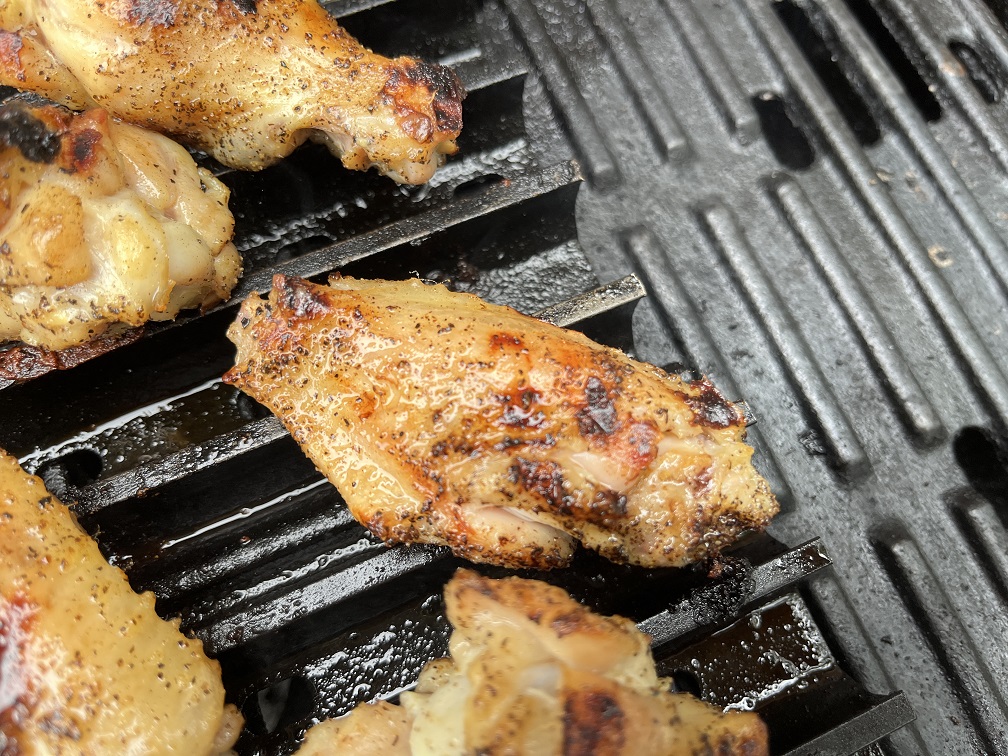There are multiple ways to tell when wings are done cooking and one of those is by the internal temperature of the wings. That being said, the internal temperature is not the best tool available and most of the time you will be better served by visual clues.
For those folks short on time, the ideal internal temperature for chicken wings is 190-200F. At these temperatures the wings are juicy and have meat that pulls cleanly from the bone along with tasty skin.
Keep reading and we will cover:
- Ideal Internal Temperature for Chicken Wings
- Problems with Using Internal Temperature as a Guide for Doneness
- Visual Clues for Chicken Wing Doneness

The Important Internal Temperatures for Chicken Wings
There are three temperatures that you should keep in mind when you are dealing with chicken wings. These temperatures are for when the wings are:
- “Safe to Eat” 160F
- “Good to Eat” 185F
- “Reheated After Being Cooked” 140F
Let’s check these out in more detail.
Temperature of Safe to Eat Wings (160F)
Chicken is technically “done” and safe to eat when it reaches an internal temperature of 160F.
However, chicken wings have a lot of fat under their skin which needs more time to render out. If you try eating wings that have only been cooked to a “safe” temperature then the skin will be a rubbery mess. Additionally, the meat will still be stuck to the bones making them hard to eat.
Temperature of Good to Eat Wings (190-200F)
In order to get really tasty wings you need to cook them until you get a temperature in the 190-200F range. At this point a lot of the fat will have rendered from the skin and the meat will pull cleanly from the bones.

Reheated Chicken Wings (140F)
Once wings have been fully cooked they can be refrigerated and heated up later.
When I am heating up previously cooked wings I take them to an internal temperature of about 140F. Since the wings are already fully cooked they are safe to eat at the lower temperature.
The temperature of 140F is not critical by any means but it is a spot that I find is great for getting the meat warm enough for eating without taking too long.
Problems with Internal Temperature as a Guide for Chicken Wings
There are several reasons that I am not a fan of using internal temperature as a guide for wing doneness.
When you measure the internal temperature you want the thermometer to only be touching the meat and not the bone. Given the size of most digital thermometers and the structure of the wings it can be a tricky task to make sure the probe is only touching the meat.
Additionally, because the flat sections are thinner than the drumettes the flats reach higher temperatures faster. In general, when the flat reaches a temperature of 190F the drumette will be at around 180F.
Last up is that fact that wings are very small cuts of meat and their temperature is going to vary wildly depending upon how big or small they are and where they are located on the grill. Pt another way, if you are using internal temp as your guide hen you will need to check every single wing and that will be annoying.

Visual Clues for Chicken Wing Doneness
I prefer to use visual clues to tell when wings are ready to eat instead of relying upon internal temperatures.
The best visual clues are:
The meat starts to split away from the bone
Browning and crisping of the skin
The fat starts to bubble underneath the skin
If you are just learning to cook wings go ahead and measure the internal temperature to determine doneness. As you experience level grows you will learn to ditch the thermometer and rely upon your eyes.
